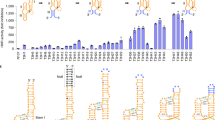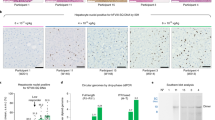Abstract
Salivary glands (SGs) appear to be a useful target site for gene therapeutics. The ability to control transgene expression is essential for clinical application. Previously, in a proof-of-concept study, we have shown that the rapamycin-inducible transcriptional regulation system can regulate protein expression after adenoviral-mediated gene transfer to SGs. To evaluate the potential ability to utilize this regulatory system for long-term control of transgene expression in this tissue, we employed a ‘third generation’, single adenoassociated serotype 2 viral (AAV2) vector encoding human erythropoietin (hEPO) under the control of a rapamycin-inducible promoter. The vector, rAAV-TF2.3-hEPO (1010 particles/animal), was delivered to mouse SGs. No detectable increase in serum hEPO or hematocrit levels was observed in the absence of rapamycin administration. However, rapamycin induced elevation of serum hEPO levels, as well as concomitant hematocrit changes, that were dose-dependent, completely reversible, and relatively stable over the course of this study (6 months), with no appreciable change in rapamycin responsiveness. Our results suggest that the rapamycin transcriptional regulation system delivered in a single AAV2 vector to SGs may be valuable for systemic protein replacement applications.
This is a preview of subscription content, access via your institution
Access options
Subscribe to this journal
Receive 12 print issues and online access
$259.00 per year
only $21.58 per issue
Buy this article
- Purchase on Springer Link
- Instant access to full article PDF
Prices may be subject to local taxes which are calculated during checkout



Similar content being viewed by others
References
Baum BJ, Voutetakis A, Wang J . Salivary glands: novel target sites for gene therapeutics. Trends Mol Med 2004; 10: 585–590.
Voutetakis A et al. Reengineered salivary glands are stable endogenous bioreactors for systemic gene therapeutics. Proc Natl Acad Sci USA 2004; 101: 3053–3058.
Rivera VM et al. A humanized system for pharmcological control of gene expression. Nat Med 1996; 2: 1028–1032.
Rivera VM et al. Long-term regulated expression of growth hormone in mice after intramuscular gene transfer. Proc Natl Acad Sci USA 1999; 96: 8657–8662.
Ye X et al. Regulated delivery of therapeutic proteins after in vivo somatic cell gene transfer. Science 1999; 283: 88–91.
Rivera V et al. Long-term pharmacologically regulated expression of erythropoietin in primates following AAV-mediated gene transfer. Blood 2005; 105: 1424–1430.
Wang J, Voutetakis A, Zheng C, Baum BJ . Rapamycin control of exocrine protein levels in saliva after adenoviral vector-mediated gene transfer. Gene Therapy 2004; 11: 729–733.
Kagami H et al. Repetitive adenovirus administration to the parotid gland: role of immunological barriers and induction of oral tolerance. Hum Gene Ther 1998; 9: 305–313.
Kass-Eisler A et al. Circumventing the immune response to adenovirus-mediated gene therapy. Gene Therapy 1996; 3: 154–162.
Harding TC et al. Intravenous administration of an AAV-2 vector for the expression of factor IX in mice and a dog model of hemophilia B. Gene Therapy 2004; 11: 204–213.
Kessler PD et al. Gene delivery to skeletal muscle results in sustained expression and systemic delivery of a therapeutic protein. Proc Natl Acad Sci USA 1996; 93: 14082–14087.
Auricchio A et al. Pharmacological regulation of protein expression from adeno-associated viral vectors in the eye. Mol Ther 2002; 6: 238–242.
Yamano S et al. Recombinant adeno-associated virus serotype 2 vectors mediate stable interleukin 10 secretion from salivary glands into the bloodstream. Hum Gene Ther 2002; 13: 287–298.
Kok MR et al. Local adeno-associated virus-mediated interleukin 10 gene transfer has disease-modifying effects in a murine model of Sjögren's syndrome. Hum Gene Ther 2003; 14: 1605–1618.
Kok MR et al. Immune responses following salivary gland administration of recombinant adeno-associated virus serotype 2 vectors. J Gene Med 2005; 7: 432–441.
Abraham RT, Wiederrecht GJ . Immunopharmacology of rapamycin. Annu Rev Immunol 1996; 14: 483–510.
Yan Z et al. Distinct classes of proteasome-modulating agents cooperatively augment recombinant adeno-associated virus type 2 and type 5-mediated transduction from the apical surfaces of human airway epithelia. J Virol 2004; 78: 2863–2874.
Thomas CE, Storm TA, Huang Z, Kay MA . Rapid uncoating of vector genomes is the key to efficient liver transduction with pseudotyped adeno-associated virus vectors. J Virol 2004; 78: 3110–3122.
Miao CH et al. The kinetics of rAAV integration in the liver. Nat Genet 1998; 19: 13–15.
Ding W et al. Second-strand genome conversion of adeno-associated virus type 2 (AAV-2) and AAV-5 is not rate limiting following apical infection of polarized human airway epithelia. J Virol 2003; 77: 7361–7366.
Duan D et al. Circular intermediates of recombinant adeno-associated virus have defined structural characteristics responsible for long-term episomal persistence in muscle tissue. J Virol 1998; 72: 8568–8577.
Zufferey R, Aebischer P . Salivary glands and gene therapy: the mouth waters. Gene Therapy 2004; 11: 1425–1426.
Felgner PL, Rhodes G . Gene therapeutics. Nature 1991; 349: 351–352.
Crystal RG . The gene as a drug. Nat Med 1995; 1: 15–17.
Acknowledgements
We thank Dr Martin Kriete (NIDCR, Animal Facility) for his invaluable help with animal studies and Mr Richard Hayward and Ms Kathleen Bolland (NIDCR, Sequencing Core Facility) for their assistance in determining vector sequence.
Author information
Authors and Affiliations
Rights and permissions
About this article
Cite this article
Wang, J., Voutetakis, A., Papa, M. et al. Rapamycin control of transgene expression from a single AAV vector in mouse salivary glands. Gene Ther 13, 187–190 (2006). https://doi.org/10.1038/sj.gt.3302647
Received:
Accepted:
Published:
Issue Date:
DOI: https://doi.org/10.1038/sj.gt.3302647
Keywords
This article is cited by
-
Targeting the Splicing of mRNA in Autoimmune Diseases: BAFF Inhibition in Sjögren's Syndrome as a Proof of Concept
Molecular Therapy (2014)
-
Progress and prospects: gene therapy for performance and appearance enhancement
Gene Therapy (2008)
-
Rapamycin-regulated Control of Antiangiogenic Tumor Therapy Following rAAV-mediated Gene Transfer
Molecular Therapy (2007)
-
Rapamycin-regulated Control of Antiangiogenic Tumor Therapy Following rAAV-mediated Gene Transfer
Molecular Therapy (2007)
-
Potential Use of Gene Transfer in Athletic Performance Enhancement
Molecular Therapy (2007)



